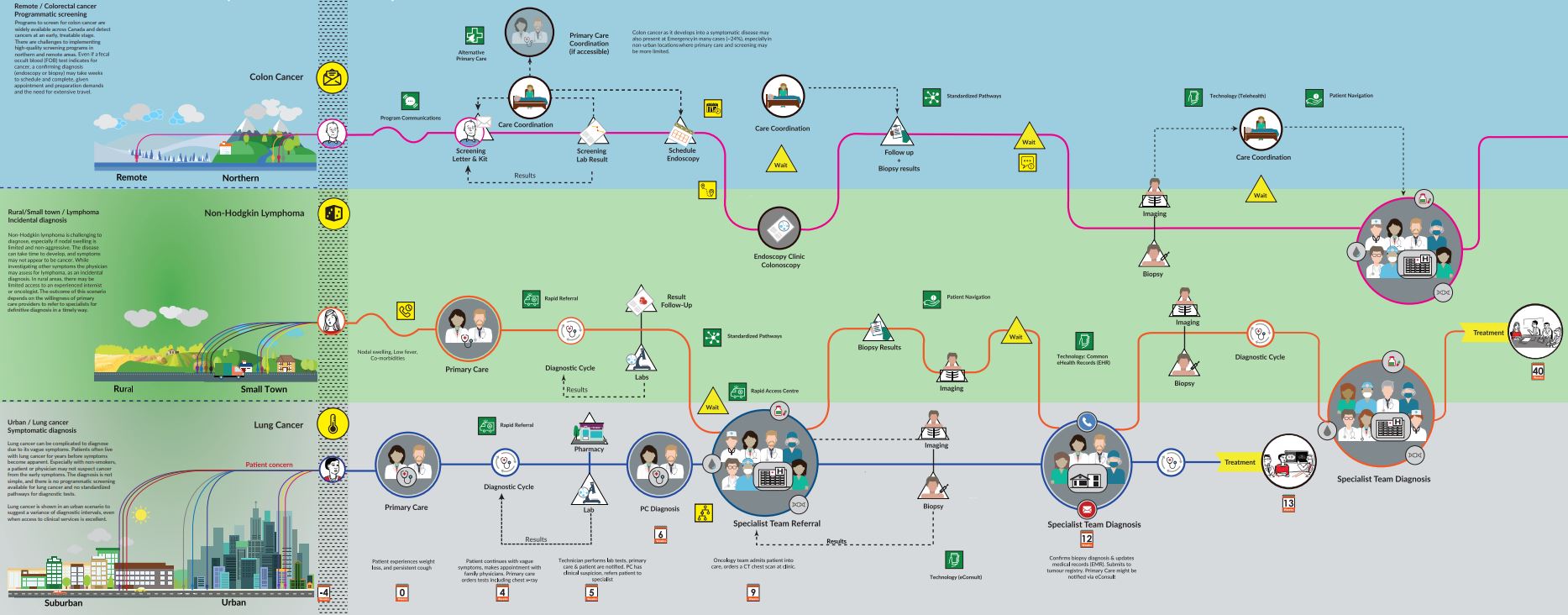Clinician synthesis map about cancer diagnosis
January 15, 2020
Review a synthesis map that shows the stages of cancer diagnosis from the clinician’s perspective based on three areas: remote, rural and urban
This synthesis map shows the process of diagnosis from the clinician’s perspective from before, through to the complex aspects of a typical cancer diagnosis for remote, rural and urban areas in Canada.

The clinical process shares system interventions that may help resolve barriers and access problems. The interventions are based on emerging Canadian practices as well as leading ones in other countries.
Colon, Non-Hodgkin’s lymphoma and lung cancers are used to represent all cancers. The three different types of cancer help illustrate both access and inequity based on geography.
The cancers also highlight trajectories from different entry points in the process. For example, colon cancer has a better chance of timely diagnosis than vague symptoms in remote areas. A lung cancer diagnosis, being more complex, has possible complications even with the best access to clinical services in a major city. Lymphoma, mapped to a small town, illustrates the need for resources from urban and regional settings.
Delays and barriers
This synthesis map also shares details about the following delays and barriers:
- Vague symptoms and patient uncertainty
- Non-urgent pre-diagnosis
- Distance and transportation
- Communication issues
- Access to care
- Transition and hand-off delays
Interventions and solutions
Interventions and solutions are also detailed:
- Program communications
- Navigation
- Alternative primary care resources
- Technology
- Rapid referral and rapid access centres
- Standardized pathways
Downloadable content
File size 12 MB
